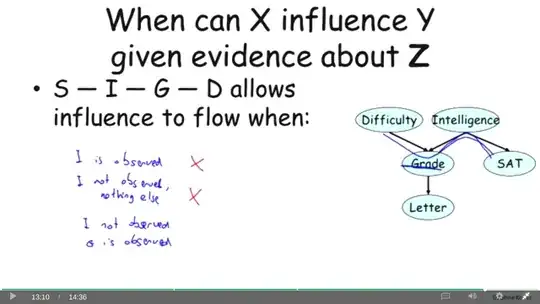The question is about the following slides:

I have confusion regarding the second and the third statements. Regarding the second statement ("If I not observed nor is anything else"). Here, we get the probability of I given S, then we can get the probability of G given I and finally we can get the probability of D given G. Why is the flow not allowed then. What's the flaw with this argument? Regarding the third one (I not observed, G is observed): I don't even know how to comprehend this. Can someone explain?